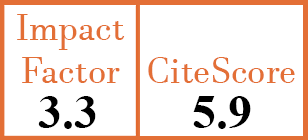Clinical aspects
Employment, work disability and quality of life in patients with ANCA-associated vasculitides. The EXPOVAS study
L. Benarous1, B. Terrier2, H. Laborde-Casterot3, A. Bérezné4, B. Dunogué5, P. Cohen6, X. Puéchal7, L. Mouthon8, L. Bensefa-Colas9, L. Guillevin10
- Department of Internal Medicine, National Referral Centre for Rare Autoimmune and Systemic Diseases, Cochin Hospital, Assistance Publique-Hôpitaux de Paris (AP–HP), Université Paris Descartes, France.
- Department of Internal Medicine, National Referral Centre for Rare Autoimmune and Systemic Diseases, Cochin Hospital, Assistance Publique-Hôpitaux de Paris (AP–HP), Université Paris Descartes, France. benjamin.terrier@cch.aphp.fr
- Department of Occupational and Environmental Diseases, Cochin Hospital, AP-HP, Université Paris Descartes, France.
- Department of Internal Medicine, National Referral Centre for Rare Autoimmune and Systemic Diseases, Cochin Hospital, Assistance Publique-Hôpitaux de Paris (AP–HP), Université Paris Descartes, France.
- Department of Internal Medicine, National Referral Centre for Rare Autoimmune and Systemic Diseases, Cochin Hospital, Assistance Publique-Hôpitaux de Paris (AP–HP), Université Paris Descartes, France.
- Department of Internal Medicine, National Referral Centre for Rare Autoimmune and Systemic Diseases, Cochin Hospital, Assistance Publique-Hôpitaux de Paris (AP–HP), Université Paris Descartes, France.
- Department of Internal Medicine, National Referral Centre for Rare Autoimmune and Systemic Diseases, Cochin Hospital, Assistance Publique-Hôpitaux de Paris (AP–HP), Université Paris Descartes, France.
- Department of Internal Medicine, National Referral Centre for Rare Autoimmune and Systemic Diseases, Cochin Hospital, Assistance Publique-Hôpitaux de Paris (AP–HP), Université Paris Descartes, France.
- Department of Occupational and Environmental Diseases, Cochin Hospital, AP-HP, Université Paris Descartes, France.
- Department of Internal Medicine, National Referral Centre for Rare Autoimmune and Systemic Diseases, Cochin Hospital, Assistance Publique-Hôpitaux de Paris (AP–HP), Université Paris Descartes, France.
for the French Vasculitis Study Group (FVSG)
CER9722
2017 Vol.35, N°1 ,Suppl.103
PI 0040, PF 0046
Clinical aspects
Free to view
(click on article PDF icon to read the article)
PMID: 28032843 [PubMed]
Received: 02/07/2016
Accepted : 02/09/2016
In Press: 20/12/2016
Published: 19/04/2017
Abstract
OBJECTIVES:
Improved therapeutic strategies for ANCA-associated vasculitis (AAV) have transformed acute and life-threatening diseases into chronic ones responsible for marked morbidity that could impact employment, work disability and quality of life (QoL). We aimed to analyse work, handicaps and QoL of AAV patients and identify their determinants.
METHODS:
Patients with AAV were included in a cross-sectional study assessing employment, work disability and QoL. Specific and non-specific questionnaires, including SF-36, were sent to patients, and clinical-biological data that could affect QoL and their determinants were analysed.
RESULTS:
Questionnaires were completed by 189 patients. Among 94 working-age (<60 years) patients, 57% had jobs, consistent with their qualifications for 81%, 77% were stably employed; 23% of workers felt that their disease qualitatively limited the nature of their work, while 43% felt it limited the quantity of work they could do; 50% thought their disease had hindered their careers and 43% that it had led to a salary reduction. These results were comparable for the different vasculitides. QoL was significantly impaired for AAV patients compared to the general population (p<0.0001). Physical health determinants for our population were diagnosis of eosinophilic granulomatosis with polyangiitis (EGPA), long disease duration and its neurological involvement, whereas mental health determinants tended to be ear, nose and throat and cardiovascular involvement, and unemployment.
CONCLUSIONS:
Our findings showed that AAV patients’ QoL was impaired compared to the general population, mainly for patients with EGPA and long-standing disease. In contrast, normal employment seemed to be preserved for the majority of the patients.



